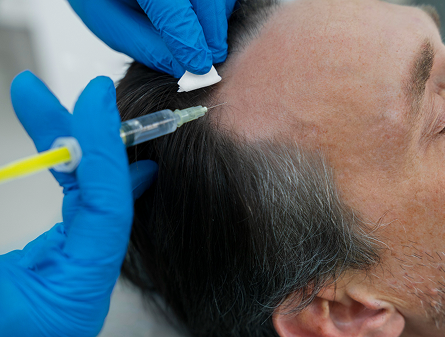Platelet-rich plasma (PRP) treatment involves isolating the PRP in the patient’s blood and injecting it back into the scalp. This promotes hair growth by stimulating the hair follicles and lengthening the growth phase of the hair. Microneedling is a treatment where tiny punctures are made in the top layer of the skin, known as the epidermis, with very small needles.
This is a minimally invasive treatment that stimulates the natural healing properties in the skin to promote the growth of hair.
PRP treatments are performed in a clinic by a certified and trained medical professional while microneedling can be performed either at home or in a clinic. Explore the comparison table below to see which of these hair restoration options is right for you.
- PRP, unlike Microneedling, involves injecting concentrated plasma from the patient’s blood into the scalp.
- PRP is performed in a clinic by a skilled practitioner.
- Ideal for patients seeking biologically active stimulation to enhance follicular healing and deeper cellular rejuvenation.
- Microneedling is different from PRP since tiny needles cause micro injuries to the scalp.
- These stimulate collagen production and improve topical absorption.
- Often done at home or in clinics, it appeals to users wanting a hands on, device based hair growth method.
- PRP is more expensive than Microneedling in Australia due to the clinical setup, biological material handling, and need for trained personnel.
- PRP sessions are individually priced and typically require maintenance visits.
- It suits those willing to pay for professional, regenerative treatment.
- Microneedling is more affordable than PRP, particularly for at-home use.
- Clinic-based sessions are also cheaper than PRP injections.
- Users can manage long-term care independently by investing in a reusable dermaroller or pen.
- PRP treatments are conducted monthly over 3–6 months, followed by semi-annual maintenance.
- Each PRP session lasts around 30–60 minutes.
- Unlike Microneedling, PRP requires fewer sessions but more preparation and recovery.
- Microneedling sessions are quicker than PRP, typically taking 15–30 minutes.
- Treatments are performed weekly or fortnightly, depending on skin sensitivity and goals.
- Regular upkeep is needed to maintain results, requiring more frequent commitment than PRP.
- PRP involves removing blood, spinning it in a centrifuge to concentrate platelets, and injecting the plasma into thinning areas.
- This contrasts with Microneedling’s physical treatment, offering biological stimulation within deep scalp tissue.
- Microneedling uses tiny needles to create precise micro-injuries on the scalp surface.
- Microneedling enhances circulation and product penetration mechanically, as opposed to PRP.
- It does not employ biological materials or injections, which is better for those who don’t want blood-based treatments.
- PRP is safely done by a professional and involves injections and minimal post-treatment discomfort.
- Swelling, redness, or bruising, which are side effects, are transient but frequent.
- In contrast to Microneedling, PRP is not at risk of tool contamination if properly handled.
- Microneedling is safe when properly hygienic, but is a bit riskier for infection than PRP because it involves the use of at-home tools.
- Aggressive or unhygienic microneedling may result in inflammation or irritation of the skin.
- Professional guidance helps reduce risks.
- Professionals must administer PRP, which cannot be done at home.
- Unlike Microneedling, it requires appointments, travel, and clinical resources.
- Best for users who prefer hands-off, in-clinic solutions.
- Microneedling offers greater flexibility than PRP.
- Users can treat themselves at home or opt for clinical sessions.
- Microneedling’s manual nature requires effort and training, but allows for on-demand care.
- PRP is widely available in cosmetic and dermatology clinics across urban Australia.
- PRP is less accessible in regional areas without medical professionals qualified in PRP administration.
- Microneedling devices are easier to source locally or online than PRP.
- Microneedling is more accessible than PRP, with tools sold online or in stores in Australia.
- Clinics offer professional services, but users can manage sessions independently at home, giving them more flexibility.
- PRP often delivers longer-lasting results than Microneedling, particularly with consistent maintenance.
- Effects are gradual but deeper due to the regenerative growth factors used.
- If sessions are stopped, hair shedding may resume slowly.
- Microneedling produces results only with consistent, long-term use.
- Benefits fade more quickly in microneedling than PRP if treatments are paused.
- Regular treatments are essential to sustain improvements in hair texture and density.
- PRP is often paired with other treatments like Minoxidil or Microneedling in clinics, but requires careful timing and medical supervision.
- Unlike Microneedling, it must be appropriately scheduled to prevent over-irritation.
- Microneedling enhances the absorption of topical products and is commonly used with Minoxidil or hair serums.
- Unlike PRP, it offers greater versatility for layering treatments and fits nicely into multi-step regimens.
- PRP appeals to those who prefer clinic-based treatments and personalised care.
- Unlike Microneedling, PRP offers a sense of medical precision and uses regenerative medicine.
- Some users feel reassured by using their blood in a supervised environment by trained professionals.
- Microneedling gives users a feeling of control and involvement.
- Compared to PRP, microneedling is more hands-on and suitable for those who enjoy managing their care.
- Its independence and convenience appeal to users wanting home-based routines.
- PRP delivers targeted growth factors to the follicles, boosting regeneration, reducing inflammation, and improving scalp health.
- Unlike Microneedling, PRP supports deep tissue healing from the inside out.
- Microneedling promotes collagen production and improves topical penetration.
- Microneedling is less biologically targeted than PRP but supports skin renewal and boosts circulation.
- Especially effective when paired with serums or growth-enhancing products.
- PRP produces more clinical waste than Microneedling.
- Single-use needles, syringes, and protective gear have a higher environmental impact.
- It also involves emissions from regular clinic visits.
- Microneedling is more sustainable than PRP.
- At-home devices are reusable and require minimal packaging.
- With proper care and infrequent cartridge replacement, its footprint remains low.
Shop our hair solutions
We are committed to providing affordable hair regeneration services for people all over Australia. Our formula can help you regain your confidence.
Shop Now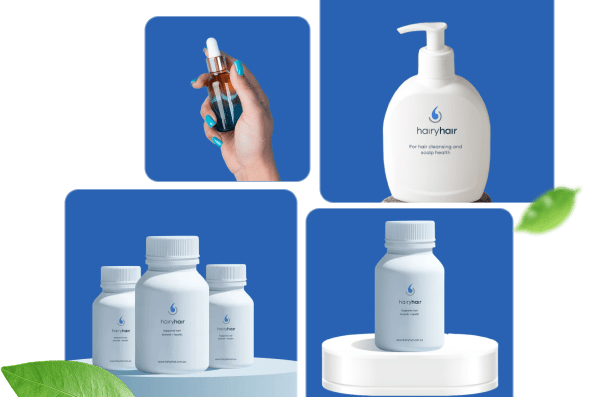

PRP vs Microneedling Effectiveness Comparison Summary
When it comes to microneedling with growth factor vs PRP, the amount of research that has been conducted into these treatments is important to look at. Microneedling for hair loss is a relatively new treatment in the dermatology field, so studies are still being conducted as to its effectiveness.
Studies into the effectiveness of PRP treatments have shown promising results although it has not officially been approved for use as a hair loss treatment yet. Microneedling sessions in a clinic are cheaper but more frequent compared to PRP treatments.
PRP treatment can also be performed on its own while microneedling is most often combined with another treatment. Microneedling may be more accessible since at-home devices can be purchased online while PRP sessions must be performed in a clinic by a licensed medical professional.
Microneedling is most often combined with minoxidil which means it can be a useful at-home treatment combination while PRP treatment can be combined with other chemicals or with microneedling making it an appealing clinical combination treatment. PRP treatment is suitable for a wide range of people dealing with hair loss while microneedling may not be suitable if you have active acne, diabetes or a blood disorder.
Microneedling vs PRP For Hair Loss User Guidance
If you’re comparing microneedling with exosomes vs PRP treatment, microneedling may be a good treatment choice if you are looking to improve your at-home hair care routine by combining it with other hair loss treatments such as minoxidil.
PRP treatments can be combined in a clinic with other treatments but also work well on their own. If you’re looking for a less regular time commitment, PRP sessions will typically take up less time compared to microneedling, particularly if using an at-home dermaroller device.
There are some potential at-home risks for microneedling if the device is not sterilised and you’re not careful of spreading a skin infection. PRP treatments carry few risks if performed by a reputable and experienced dermatologist or aesthetician.
Take Our Hair Loss Quiz to See Which Treatment Suits You?
Take A Hair Quiz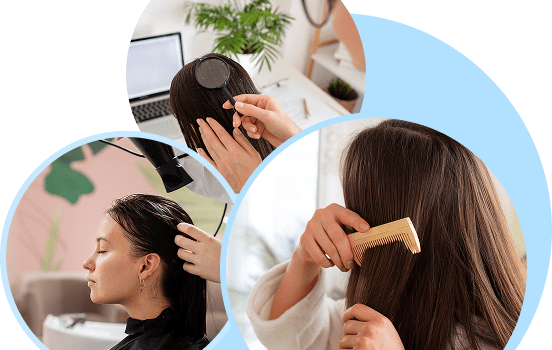

Frequently Asked Questions
We have put some commonly asked questions.
Nunc scelerisque tincidunt elit. Vestibulum non mi ipsum. Cras pretium suscipit tellus sit amet aliquet. Vestibulum maximus lacinia massa nontor.
Platelet-rich plasma (PRP) treatment involves drawing blood from the patient, isolating the beneficial nutrients and injecting it into the scalp where hair loss is occurring. This promotes hair growth and has many other applications from encouraging healing to skin rejuvenation.
Platelet-rich plasma (PRP) treatment involves drawing blood from the patient, isolating the beneficial nutrients and injecting it into the scalp where hair loss is occurring. This promotes hair growth and has many other applications from encouraging healing to skin rejuvenation.
Platelet-rich plasma (PRP) treatment involves drawing blood from the patient, isolating the beneficial nutrients and injecting it into the scalp where hair loss is occurring. This promotes hair growth and has many other applications from encouraging healing to skin rejuvenation.

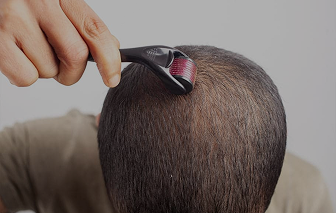



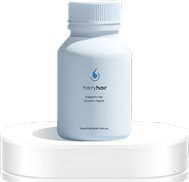
 See All
See All